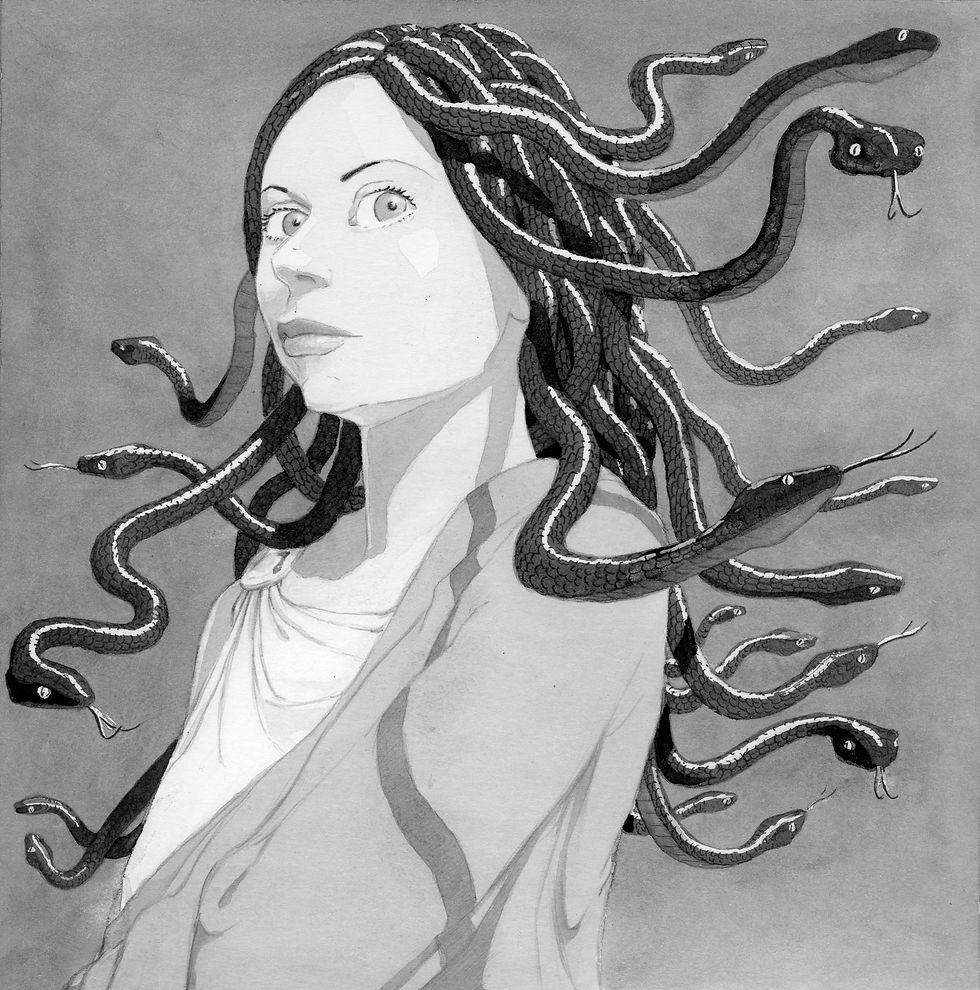Behind the print: "Beltane"
- lucy w
- Apr 28, 2023
- 3 min read
Tim Major explores folklore, legendary creatures, stories and British raptors in his etchings. He explains why he decided to make “Beltane”, one of the prints in his featured artist exhibition at Greenwich Printmakers, and how his love of late-night horror films has found its way into his work.

Why did you decide to make “Beltane”? Your work has a very cinematic feel – is that an influence on your printmaking?
“Beltane” was originally conceived as a purely wholesome image of just children in a flower meadow; a sarcastic ‘chocolate-box’-style riposte to a curator who had said that another of my prints might be considered offensive. The inclusion of a wicker figure and the title “Beltane” (the Celtic name for May Day) were in part a homage to one of my favourite films, “The Wicker Man”. I grew up watching late-night horror films on TV and, having kept an interest in the genre, I've recently been very impressed by the films of director Ben Wheatley, in particular his brilliant “Kill List” from 2011.
Some might also see this print as a commentary on the contemporary environmental movement. Some may say this print could be alternatively titled “Greta and friends”.

Your work often draws on your interest in cryptozoology (the study and search for legendary creatures, such as Loch Ness), stories and folklore, and you also have a really beautiful series of prints about British birds of prey. Can you tell me a bit more about that?
I find cryptozoology fascinating to such an extent that I once spent nearly a decade stuck down an online Bigfoot enigma rabbit hole, but the experience had the plus side of making studying paleoanthropology mandatory.
The prints inspired by cryptozoology and the bird of prey prints are very much linked. As a child in the 1970s, the vast majority of the UK’s raptor species were extremely rare. I formulated the idea that these scarcer ones that I was seeing only in bird guides were, to all intents and purposes, mythical. Hopefully, the prints convey a sense of such mystery. In the intervening years, with the much recovered populations, I’ve been fortunate to see nearly all the raptor species in the wild, with only a couple of still very rare ones eluding me, despite standing for hours alongside other binocular-wielding, bearded and anorak-wearing blokes in remote fields. I haven’t gone searching for the Sasquatch yet...but you never know.

How do you go about making a print?
When I have an idea for a print, I find it important to avoid looking online to see if a similar image already exists. I refine the composition over a number of sketches before drawing on the plate. I particularly enjoy the momentary distancing from my own work that can occur when first seeing the reversed printed image. Seeing a first print can throw up other surprises that aren’t always welcome, due the variables in the etching process. To limit the chances of that happening, I find it useful to strictly follow a detailed plan of the biting timings. However, there are always unexpected results. Sometimes the planning of the aquatint/tonal biting can feel like doing a mind-bending, monochrome jigsaw.

How did you get into printmaking?
During my Illustration degree at Exeter College of Art and Design, I unfortunately only had the opportunity to make a couple of prints, largely due to inter-departmental politics, but a few years later I enrolled on an etching evening class at Putney School of Art. I started etching as a way of reproducing and selling drawings.

Your prints have a very strong sense of narrative. Where do you think that comes from?
I think the sense of narrative you mention may stem from drawing cartoon strips for Loaded and other magazines and working as a storyboard artist at Saatchi Advertising. During my early teens, I spent a lot of my spare time drawing storyboards of imagined scenes from films that I was too young to be allowed into the cinema to watch.

What are you working on now?
I'm hoping to soon finish a large plate of a Roc, a giant eagle in the popular mythology of the Middle East, and I’m also working on a print of a Gorgon, and a drawing with the preliminary title “The Last English Woodwose”.
Tim’s featured artist exhibition runs until May 14, and his fantastic etchings are available in the gallery all year round. For more information, see his artist’s page.

Comments